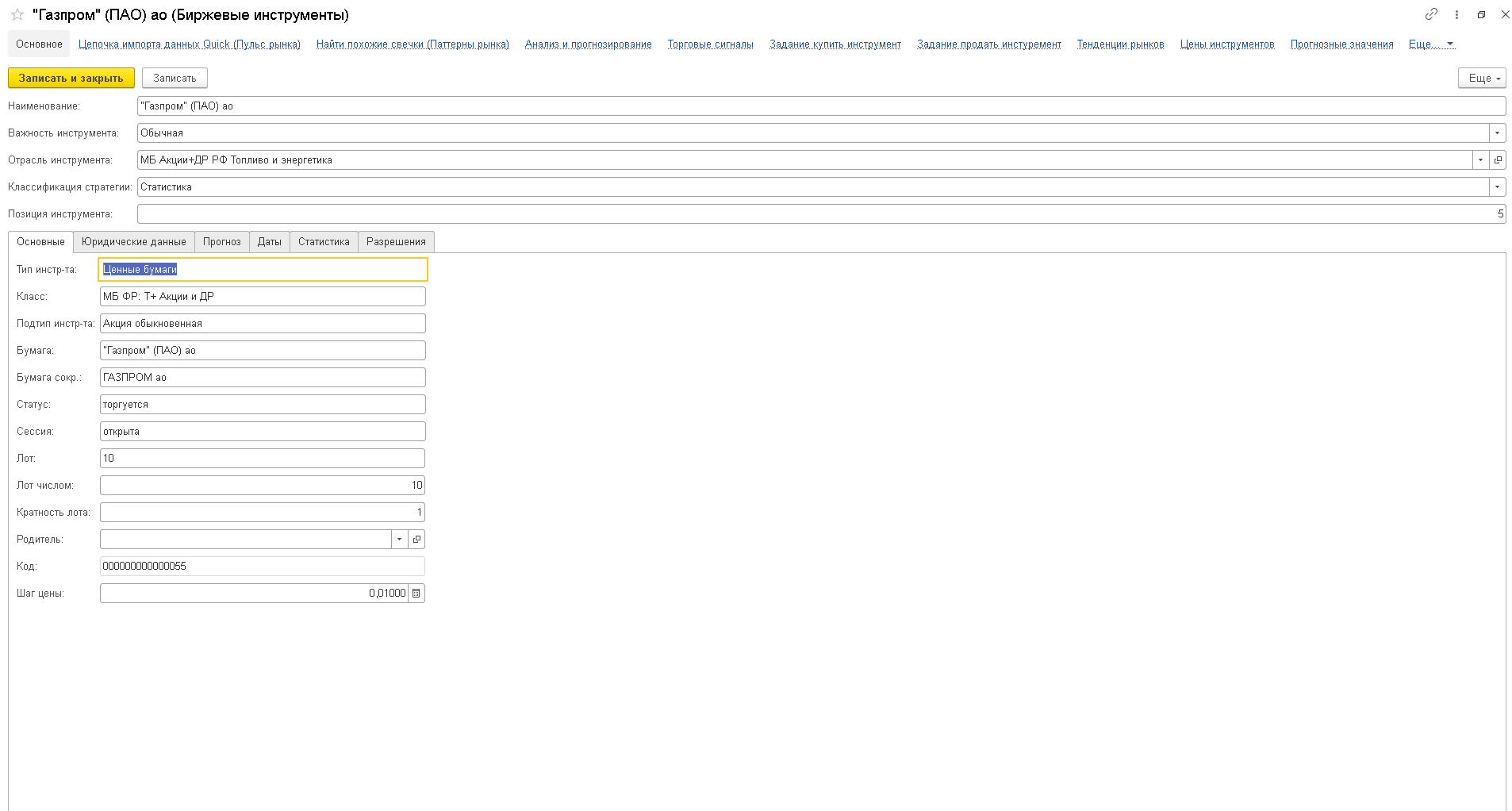When a 1C programmer gets bored, he tries to brighten up his free time as best he can. And he only knows how to program. At the same time, the programmer often does not have the skills to work with exchange instruments. This is how the program is born. Then she gets smarter. Then it no longer requires the participation of a programmer.

The program is executed on the 1C Enterprise 8 platform. It was tested in the file version mode on the Windows 10 platform. The program's performance is also possible in the three-tier 1C Enterprise 8 architecture in Windows-like environments. This is due to the mechanisms that are used within the program.
1. Data sources (exchange system information)
The Quik 8.7 Exchange Terminal is used as a data source.
For exchange, the Microsoft Access database is used as a source of information.

For loading tasks into the system, an exchange mechanism is used that uses exchange files.

2. Program desktop
As expected, the program should have a desktop that quickly reflects the current state of affairs.

Namely: this is the current exchange information coming in real time and, of course, the current standing of the portfolio of available exchange instruments. Of course, it is better to reflect the portfolio in at least three angles: according to strategy, according to the sector of the instrument, according to the additional classification of the instrument in relation to the exchange situation.
3. Under the hood of the program
From the desktop, of course, you can go directly to the desired section, but of course you need to be able to look under the hood of the program.

Everything here is based on typical mechanisms available in the 1C Enterprise platform.
4. The "Exchange instruments" directory will become a place for storing information on each exchange instrument.


5. The document "Quik import data" will help to receive data about the situation on the exchange from the external system.

6. The document "Assignment for the purchase of tools" will help transfer information from what we want to buy to the external system.

7. The document "Assignment for the sale of instruments" will help us transfer information to the external system about what we want to sell.

8. Information will come back from the external system in the form of documents "Purchase of instruments" and "Sale of instruments".

9. To see the result of what we have bought, we will need a report “Availability of instruments”

10. To see what we have sold, we will need a report “Sales of instruments”

11. Let's try to make the program smarter
Let's add the ability to store the history of data received from an external system by price.

And for other parameters.


12. Let's try to analyze and predict data based on the search in the system for similar combinations of behavior. We need a tool that, based on the current situation for an instrument in the market, will select similar situations for other instruments and allow us to predict the price.

13. Needless to say, we shouldn't forget about the analysis and forecasting mechanisms built into the platform.




14. Since the Trading Terminal already has a rich graphical analysis mechanism, there is no point in repeating it. Only if a little bit.

15. It remains to add settings / constants. And start the program on your own.




I did not even expect that a self-learning system would turn out, which may one day make money on the exchange. It remains to wait for the market growth and luck.